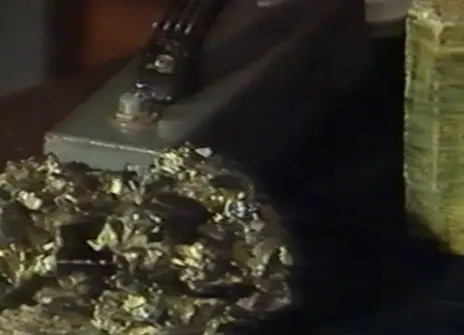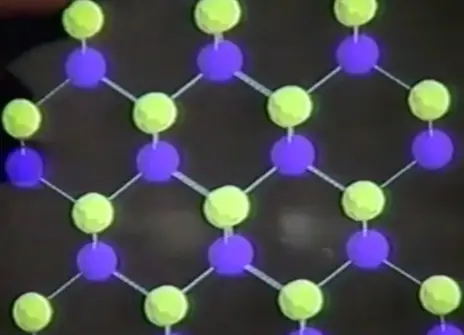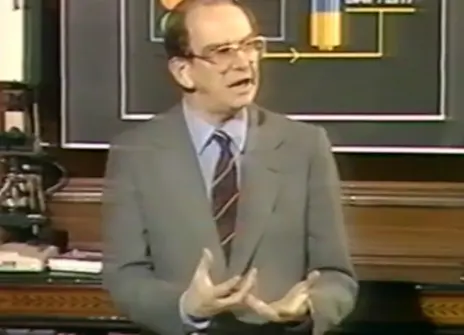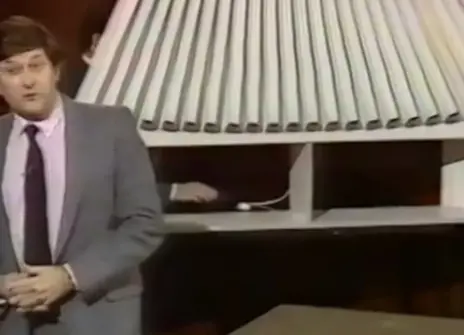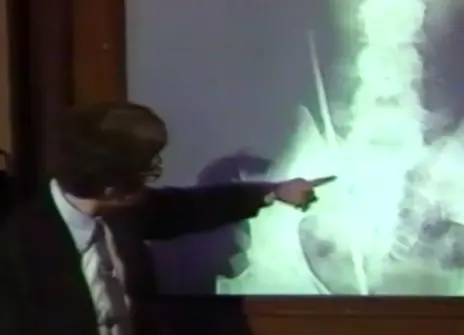Lecture 1 – Introducing the characters
From the programme:
A wealth of information relating to the nature of crystals can be gleaned from an examination of the symmetry and other striking physical characteristics of minerals and gemstones. Especially revealing are their optical, thermal and electrical properties. Coloured solids, be they fashioned by Nature over geological time or in the laboratory on the scale of human activity, as well as the luminescence induced within them by illumination with ultra-violet light or electrons, tell us a great deal about the interior of crystals and about the nature of light itself. In turn, by probing a few other properties of both familiar and unfamiliar minerals and man-made crystals, we can understand the processes entailed in creating colour, in the emission of light and, in particular, in the contrast between incandescence and laser action.
About the 1987 CHRISTMAS LECTURES
From the 1987 lecture programme:
"Crystals first appeared on earth many millions of years before the emergence of life. The first laser, however, based on a man-made crystal of ruby, was fashioned less than thirty years ago. Nowadays, crystals and lasers play crucial roles in the design of new materials, in the expanding world of communications, in medicine and environmental science and in the quest for better, cleaner forms of energy. They also function as the picot for a wide range of fundamental scientific studies."
In this series of six CHRISTMAS LECTURES, Professors John Meurig Thomas and David Phillips explore the science and applications of crystals and lasers, reviving some of the key experiments from the history and evolution of physical sciences and exploring what the future might bring.

